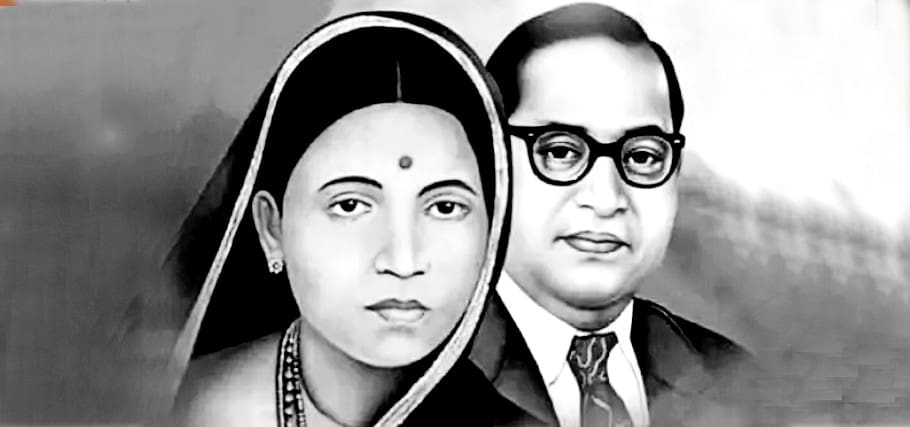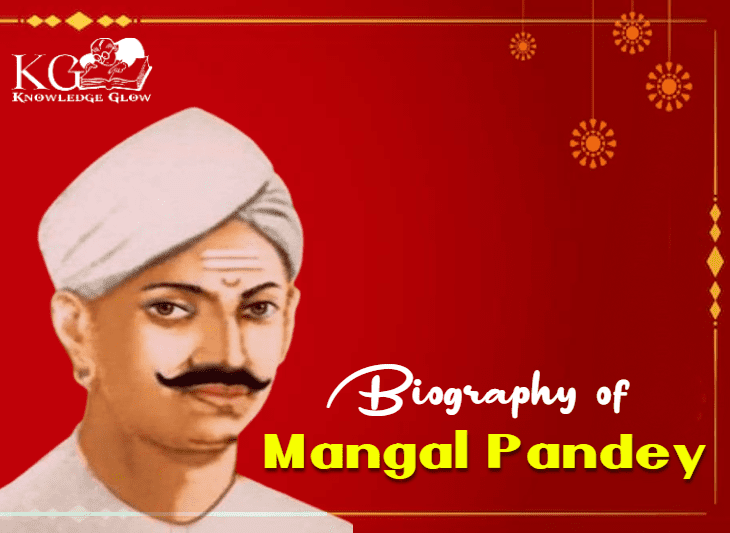Introduction of Bhim Rao Ambedkar
Bhim Rao Ambedkar was an Indian jurist and the chief architect of the Indian constitution. He is known as Babasaheb by his followers, an honorific derived from the Marathi word “Babasaheb” meaning father’s elder brother. His courtesy name was Roshan Tukaram Maharaj. Ambedkar was born on 14 April 1891 at Mhow town in Central Provinces and Berar district in a Hindu Ezhava family of Mahar caste, who were traditionally employed as agriculturalists and tenant-farmers (jati).
B. R. Ambedkar Was the Architect of the Indian Constitution.
B. R. Ambedkar was the architect of the Indian Constitution. He was also known as Babasaheb and he was born on April 14, 1891 in a small village named Sakharam Gadi (now called Nagpur) in Maharashtra state of India.
Ambedkar graduated from Elphinstone College with a Bachelor’s degree in Law from Bombay University on December 22, 1915. After finishing his degree, Ambedkar worked for several years as an attorney in Poona before moving to Bombay where he continued practicing law until 1923 when he joined politics full time after being elected to the Legislative Assembly of Bombay Province from Muslim-majority constituencies there; he quickly became one of its most influential members due to his strong stance against caste oppression among Indians under British rule (see below).
He Was Born on April 14, 1891.
Bhimrao Ramji Ambedkar was born in Mhow, Madhya Pradesh, India on April 14, 1891. His father was an army officer who had risen through the ranks from humble origins. His mother died when he was three years old and his father remarried soon after to make a large family of 13 children including Bhim Rao Ambedkar.
His name at birth was Bhimrao Ramji; this name was changed to “Bhim Rao” upon entering school as there were already two other boys named Bhima (the hero of Mahabharata) among them!
Ambedkar Had a Love for Learning and Knowledge.
Ambedkar was a voracious reader. He read all kinds of books, including classical works and modern literature. In addition to reading, he wrote extensively in several fields, including law and political science (he studied under the law professor who taught him). He also took part in public debates on topics such as caste discrimination and untouchability; these led him to become one of India’s most active participants in public life during his lifetime.
Ambedkar was also an expert researcher: he wrote many books that focused on different aspects of Indian history and culture; these include his magnum opus “Riddles In Relevance” which contains essays about social issues such as education reformer Jyotirao Phule’s thoughts on casteism (the idea that people should be classified according gender), Dr B R Ambedkar’s views on religion vs secularism (the belief that religion belongs only within one’s private sphere), economic policies implemented by various rulers over centuries–all topics relevant today because they illustrate how certain groups have suffered due to unjust laws passed down through generations before us today!
He Acquired a Master’s Degree in Economics From Bombay University in 1915.
The first person from an untouchable caste to get a degree was Dr Bhim Rao Ambedkar, who got his master’s degree in economics from Bombay University in 1915.
His Achievements Include Many Titles and Degrees.
Bhim Rao Ambedkar has made many achievements in his life. He is the first Indian to get a PhD in Economics, Political Science and Philosophy. He was also the first Indian to get a PhD in Law from Harvard University.
Ambedkar’s scholarship is recognised worldwide, with over thirty books written about him including The Untouchables: Who were they? Why were they treated as untouchables? (1940); Thoughts on Scrap of Paper: Writings & Speeches by Dr B R Ambedkar (1953); The Buddha and His Dhamma: A Study based on Buddhist Scriptures (1957).
Ambedkar Knew English, Marathi, Hindi, Gujarati, Pali and Sanskrit Languages Very Well.
Ambedkar was a polyglot and he knew many languages very well. He was also a good writer in many languages, including English, Marathi, Hindi and Gujarati. Ambedkar wrote about his experiences as an untouchable in India and how he came to terms with his identity as an Indian citizen through education.
Ambedkar wrote extensively on topics such as caste discrimination and untouchability; women’s rights; education for Dalits (Scheduled Castes); economic reform through land reforms; and national independence from Britain during the Indian Freedom Struggle.[6]

He Got Married to Ramabai at the Age of 15.
Bhim Rao Ambedkar was a leader, who fought for the rights of Untouchables. He was born in 14th November 1891, at Mhow in Central Provinces. He got married to Ramabai at the age of 15 and they had two children together Ramabai and Dharamrao. Bhim Rao Ambedkar died on 6th April 1956 due to heart attack at Nagpur where he was living with his family since 1880s, when he came back from London where he went to study law after finishing school education in Maharashtra state under British rule until independence movement took place which led him away from his home village to Bombay city with rest other members of Untouchable community who were also working there like Mahatma Gandhi or Dr Babasaheb Ambedkar himself (his father).
After her husband’s death Ramabai moved back near Mhow district where she started working as teacher again until she passed away on 29th October 1935 due to cancer disease.
Also Read: Biography of Chhatrapati Shivaji Maharaj
The Couple Had Five Children Together but Only Two Survived.
Ambedkar and his wife had five children, but only two survived. One of them was Bhimabai (1879-1933), who died at age three from malnutrition and illness. The other child of this union was an unnamed daughter born in 1904, who died within days of being born due to a genetic disorder called Down syndrome.
According to the biographer Ravi Kant Pandey: “Ambedkar has left us with a legacy that is both glorious and painful.”
Ambedkar Was the First Indian to Be Educated Abroad After Studying at the Columbia University, New York and the London School of Economics.
Ambedkar was the first Indian to be educated abroad after studying at the Columbia University, New York and the London School of Economics. He returned home in 1926 to become a leader in Congress party politics. In 1929 he became president of its Scheduled Castes Federation (later called Nationalist Party) which helped win seats for Dalits in provincial legislatures during elections that year.
He served as minister for social welfare from 1937-1939 under Prime Minister Jawaharlal Nehru’s cabinet before resigning because he disagreed with Nehru’s policies on Kashmir and China.[2]
He Joined the Bar at Gray’s Inn in 1923.
Bhim Rao was the first Indian to be educated abroad after studying at the Columbia University, New York and the London School of Economics. He joined Gray’s Inn in 1923. His father never thought that his son would become a lawyer but he was against caste system and untouchability so he decided to send Bhim Rao Ambedkar for higher education in England where there were no restrictions on education based on caste or religion as it is today.
He returned post independence with high hopes but found out that nothing has changed since then except some good laws which have been passed by Parliament through Constitution (1948). He realized that this country needs more than just good laws; it needs fundamental changes in mindset among people and so began his journey towards social justice movement led by Mahatma Gandhi’s Quit India Movement
After Returning to India, He Opened His Own Legal Practice, Which Soon Became Successful Due to His High Education and Experience Abroad.
- Bhim Rao Ambedkar was a lawyer who opened his own legal practice soon after returning to India.
- He had been educated abroad, which gave him an advantage in the field of law.
- He gained experience working on the Indian constitution during his time abroad and this helped him further develop as a lawyer.
Ambedkar Was a Member of Maharashtra Assembly From 1926 to 1934.
Ambedkar was a member of Bombay Legislative Council from 1926 to 1934 and also led the Depressed Classes Party. In 1936, he was elected as an independent candidate in the elections to the Central Assembly from Nagpur. He became a member of Maharashtra Legislative Assembly from 1937 until his death in 1956 by which time he had become an important figure in Indian politics as well as one who had made great contributions towards social reform movements such as those related to Untouchability (as discrimination against people based on caste).
Ambedkar was born into a poor family on April 14th 1891 at Mhow village near Indore city in Madhya Pradesh state where he spent most of his childhood days working hard to help support his family financially while attending school regularly throughout this period too

Bhim Rao Ambedkar Is an Important Figure in Indian History
Ambedkar was an important figure in Indian history. He was the first Indian to be educated abroad after studying at the Columbia University, New York and the London School of Economics.
He became a member of Maharashtra Assembly from 1926 to 1934 and later became an independent member of Parliament from 1936 to 1952 when he left Congress party due to differences with Nehru over policy issues related to untouchability issue (which Gandhiji had ignored).
He also published many books on social reform such as ‘Who Will Repay The Stamp Dues?’ (1924), ‘Why I Am An Untouchable’ (1927) etc., which helped him gain popularity among Dalits across India.
Conclusion
Bhim Rao Ambedkar‘s journey has been one of struggle and sacrifice. He faced many hardships as a child and even after becoming one of India’s most prominent leaders, he continued fighting for equality among different groups in society.
Important Question and Answer About Bhim Rao Ambedkar
1. What does Bhim Rao Ambedkars name mean?
Bhim Rao Ambedkar was born on 14th December 1891 in Mhow, Madhya Pradesh, India. He was the first Dalit (untouchable) person to become the Chief Minister of India. His father’s name was Ramchandra Ambedkar. He was named after his grandfather who was called Bhimrao Ambedkar.
2. Who was he?
He was born in Mhow, Madhyapradesh. He was the son of Ramchandra Ambedker and Savitri Bai. He was married to Dr. Radhabai Ambedkar. He had two sons – Rameshwar Ambedkar and Jayanti Ambedkar.
3. How did he die?
On 15th January 1956, he died at Nagpur, Maharashtra, India. He was cremated at Bagh-e-Jinnah.
4. Why do we call him Bhim Rao?
His surname was Ambedkar. But people started calling him Bhim Rao due to his political activities.
5. What were his political views?
He believed in social equality and wanted to give equal rights to untouchables. He fought for their rights and became the first Dalit leader in independent India.
6. Did he have any achievements?
Yes, he was the first Dalit to become the chief minister of India. He was the only Dalit to hold the post of the prime minister of India. He also wrote many books and poems.
7. When did he start his political career?
In 1927, he joined the Indian National Congress. In 1934, he founded the Scheduled Caste Federation. In 1937, he became the president of the All India Untouchability Eradication Front. In 1942, he became the general secretary of the All India Depressed Classes League. In 1946, he became the president and founder of the Scheduled Castes Federation.








